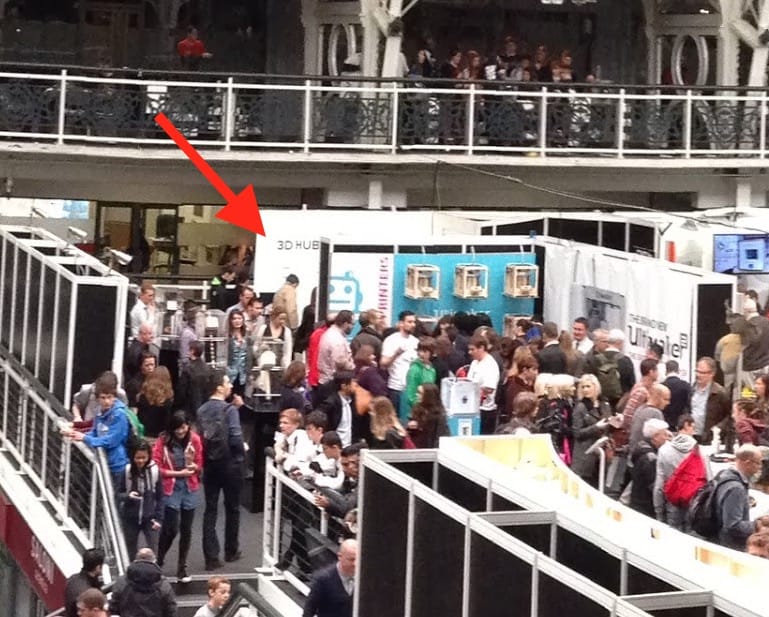
3D print network 3D Hubs announced an impressive milestone: they’ve not produced over one million 3D prints.
That is a very large number, and to put it in perspective, that would take a single machine running 2 hour consecutive 3D prints a period of over 228 years to complete. That’s an awful lot of 3D printing!
3D Hubs brought forward a brilliant concept: sharing unused cycles on the soon-to-be-widespread 3D printers. In 2013 when they launched there were certainly far, far fewer 3D printers in operation than there are today, perhaps only a few tens of thousands.
I first encountered the company while attending an early 3D print tradeshow in London, where 3D Hubs exhibited at a small stand, where they spoke of the huge number of participants on their system. At the time it seemed large, but of course it is small compared to what goes on today. We first wrote about them in late 2013 regarding their well-known monthly trends report, which is about the only publicly available data about 3D printer use you can easily find. We even named their launch as one of our most important 3D printing events in 2013. In fact, I even have a very bad picture of their booth from 2013, where I first spoke with them:

One group operating 3D printers early on was in Amsterdam, the birthplace of 3D Hubs, where the founders got their start delivering 3D prints to clients who made print requests. That business model has persisted to this day. The idea was to create a kind of “Uber” or “AirBNB” for 3D printers.
In 2016 we were fortunate enough to manage a visit to 3D Hubs HQ in Amsterdam alongside a canal – although where exactly in Amsterdam would you NOT be alongside a canal? There we saw how the service operates behind the scenes, including their development and support services.
But the company has made a journey that in some ways echoes the path that the 3D printing industry has taken over the past several years.
At conception, 3D Hubs and many others believed the world was soon to be awash in consumer-style 3D printers. And it’s not surprising, given the extreme marketing at the time from MakerBot and especially 3D Systems, who even touted the notion of having a 3D printer in every room in your home. Yes, they actually proposed that.
Of course, that didn’t happen for a number of reasons we won’t get into today, but the fact that it didn’t happen caused many 3D printing companies to reshape their business models and pivot towards more profitable angles.
Many desktop 3D printer manufacturers slew their aim from consumers towards professionals or educators, while others simply evaporated. Some are still undergoing changes even today.
3D Hubs was caught in this switch as well, and seems to have made out quite well.
As they grew, 3D Hubs added a number of services to assist those participating in their network of 3D printers, which permits buyers to make 3D print requests to be filled by local 3D printer operators who happen to have spare time available on their equipment. The services were intended to inform the sometimes not-so-experienced 3D printer operators in how to get the best results.
But as the public interest waned, a stronger focus on business and industrial applications was required. 3D Hubs indeed took up this challenge by subtly shifting their focus from consumer-style equipment towards more industrial ventures. They’ve done so by gradually introducing new types of equipment & materials, and services to make them work properly on the network.
This seems to have proven successful, as they now boast of far more varied capabilities on their network, as commercial 3D print operations have signed up as participants. They no longer talk so much about the number of 3D printer operators signed up, as that really matters less. What matters more is the ability for professionals to use the 3D Hubs network to get the quality parts they need in the materials they require. And that is happening.
Today 3D Hubs operates a ridiculously wide network of 3D printing equipment, manned by independent operators around the world. They have the ability to print in many different materials with many different 3D printing processes, able to meet almost any typical requirement.
The world of 3D printing has undergo tremendous change in the past ten years, and 3D Hubs has adapted to those changes throughout their brief existence. I suspect they’ll be able to handle the inevitable changes to come as well.
Via 3D Hubs

